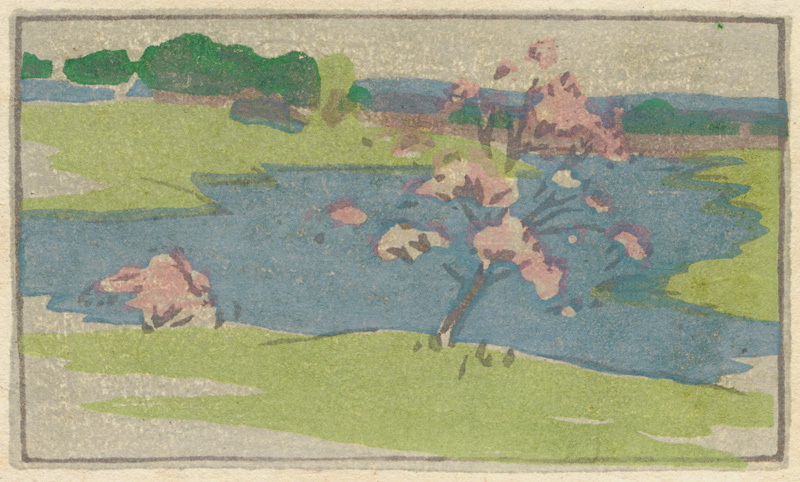
19th, 20th & 21st Century Fine Prints
707-546-7352 · fax 707-546-7924 · web: www.annexgalleries.com · email: artannex@aol.com
Nabby's Point by Arthur Wesley Dow

Nabby's Point
Arthur Wesley Dow
Title
Nabby's Point
Artist
Arthur Wesley Dow
1857 - 1922 (biography)Year
c. 1895
Technique
color woodcut
Image Size
2 7/16 x 4" image
Signature
unsigned
Edition Size
unique impression from an unstated edition of variant impressions
Annotations
Reference
Color Woodcut International, catalogue no.22; Hirschel / Adler 54, 55, 56 and 57.
Paper
antique-white Japanese wove
State
published
Publisher
artist
Inventory ID
DOBE103
Price
SOLD
Description
Nabby's Point is on the Ipswich River in Ipswich, MA and was named after Nabby Holland. As with most of his block prints Dow did numerous color variants, this one is in subtle greens, grays and pinks. Arthur Wesley Dow was born in Ipswich, Massachusetts in 1857. His early training in Worcester, Massachusetts with the portrait and historical painter Anna K. Freeland was followed by his apprenticeship in Boston with the painter, James M. Stone. Encouraged to continue his studies in Europe, Dow set sail in 1884 for Paris where he became a pupil of Gustave Boulanger and Jules Lefèbre. In Paris his artistic ideals were revolutionized, after witnessing the new wave of styles and techniques- much of which he wasn't partial to, but never the less was inspired by. Upon his return to Boston in 1889, Dow hoped to pursue his artistic bent while eschewing the rigidity of the academies. His discovery of a book on the Japanese ukiyo-e printmaker Katsushika Hokusai at the Boston Public Library exposed him to design elements that had not been addressed in his formal art studies abroad. This discovery led Dow to the Boston Museum of Art where he met the foremost Japanese scholar, Ernest Fenollosa. Together they studied the formal design elements of Japanese prints and distilled them into four classifications: line, form, color, and “notan”, or the use of dark and light. Dow elaborated on these new theories in his book, Notan.
1/8/10
1/8/10
